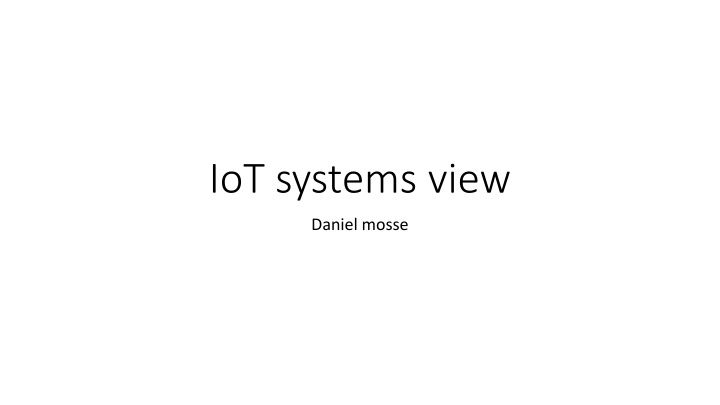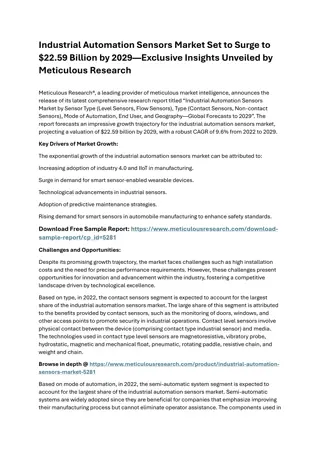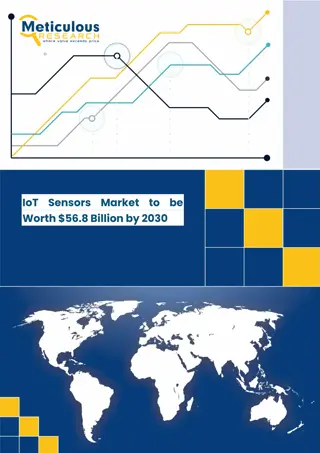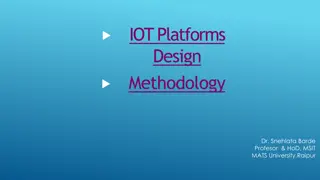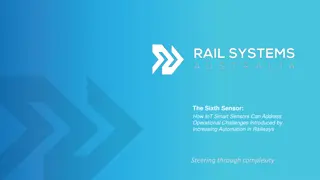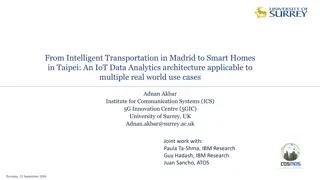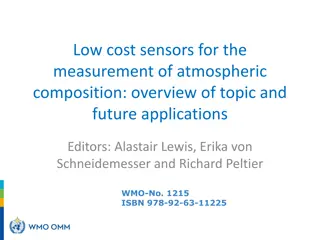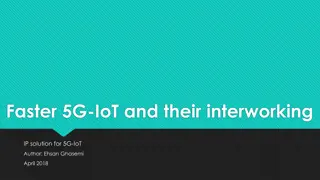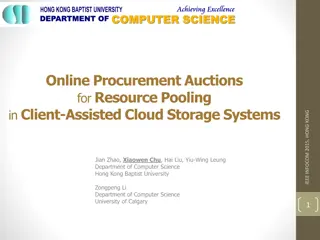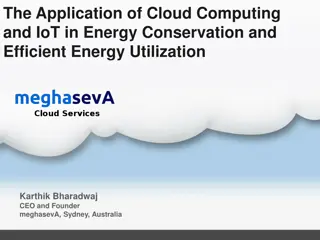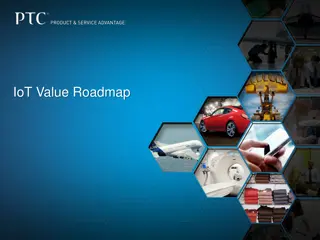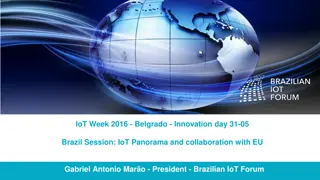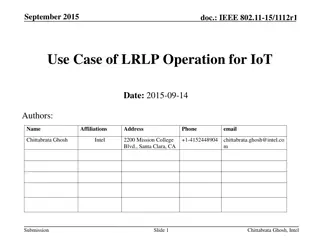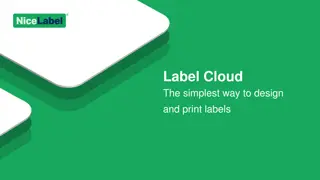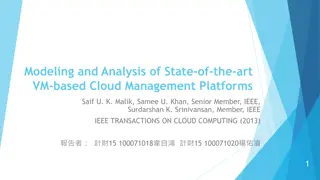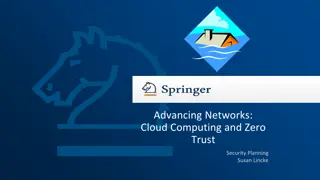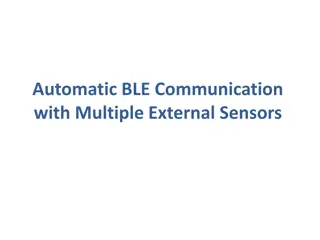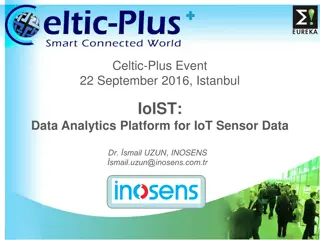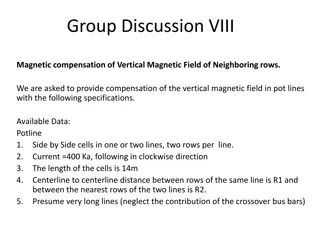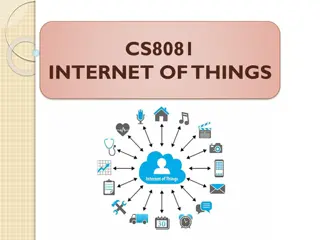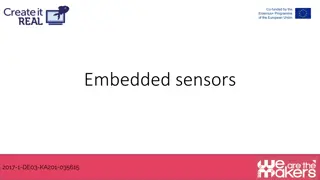IoT Systems: Sensors, Data Processing, and Cloud Integration
In IoT systems, sensors at the bottom layer collect data which is processed locally to save bandwidth and energy. The middle layer involves routers or gateways that collect sensor data wirelessly and transmit it securely. Finally, data is sent to cloud servers for further analysis and processing. Real-time characteristics, access methods, and security considerations are vital aspects of IoT systems.
Uploaded on Apr 12, 2025 | 3 Views
Download Presentation

Please find below an Image/Link to download the presentation.
The content on the website is provided AS IS for your information and personal use only. It may not be sold, licensed, or shared on other websites without obtaining consent from the author.If you encounter any issues during the download, it is possible that the publisher has removed the file from their server.
You are allowed to download the files provided on this website for personal or commercial use, subject to the condition that they are used lawfully. All files are the property of their respective owners.
The content on the website is provided AS IS for your information and personal use only. It may not be sold, licensed, or shared on other websites without obtaining consent from the author.
E N D
Presentation Transcript
IoT systems view Daniel mosse
IoT bottom layer Sensors at the bottom layer, collect data Sensors can be the few-cent sensor, bought in bulk for adding to a board or a sensor bundle that comes with a microcontroller already on board Sensor data usually is analog, requiring an ADC (analog to digital converter), which typically comes in sensor bundles Sensor data can be processed locally To save bandwidth and energy, typical local data treatments include Suppression of duplicates Packing of multiple data items into a single message Depending on microcontroller, more sophisticated local treatment can be done Sensor data is transmitted typically wirelessly (see protocol stack below) Like ADCs, the radio is typically present in sensor bundles There are many different options for hardware radios and protocols (e.g., Bluetooth, BLE Bluetooth low energy, LoRa, Wi-Fi, )
IoT middle layer Sensors (or bundles) send data Router or gateway collects data from multiple sensors The gateway is typically more powerful Several radios (collect sensor data wirelessly) More powerful CPU Added security Transmit data wired fashion Is the gateway part of Edge Computing? Depends on definition
IoT top layer Gateway/Edge send data to Cloud servers Gateway can filter, treat, analyze data Typically use a publisher subscriber (pub-sub) model Many different examples and implementations, like MQTT Each cloud provider has its own Cloud services are abundant Free or paid, or in between Can you trust servers with your data? Multiple gateways send data from multiple users Analyses are more powerful with more data and more servers (which also have more capabilities/ libraries)
IoT system characteristics Real time Some data items have a freshness period (deadline) Some actuation commands have a zero value (example?) or negative value (example) after a deadline Access to devices One way (send data only) communication is more secure Two way (send data; receive data and commands) communication allows for Pros: OTA (over the air) updates, reconfiguration of devices, Cons: security problems (reconfiguration of devices, malicious actuation) Discovery of the devices To access a device, need: what the device is how to communicate with it Make it public or keep it private (what are the pros and cons?)
More IoT system characteristics Hardware is composed of: sensors, CPU, memory, network, specialized units, depending upon sensors (e.g., audio chip, video hardware, etc) Developing applications requires a toolchain Vendor specific or open source IDE typically includes compiler, system analyzer (CPU/memory usage, timing diagrams, etc.) Scheduler can be downloaded with Application Applications can be user level or middleware/libraries
Other considerations Operating system: Concurrency or not Instrumentation: different levels, Interface to turn it on or off, overhead considerations Allows for blocking devices, polling devices, or both Consider the network and protocol stack Licensing requirements Software license Ownership of data Privacy
Protocol Stack Internet examples XML HTTP TLS TCP IPv6 IoT example equivalents Web Objects CoAP DTLS UDP LoWPAN
Power management Device duty cycle (i.e., turning the device on/off) Periodicity of collecting or transmitting data Data compression, packing, Data transformations: how aggressive Location (sensor, Gateway, edge) energy impact
